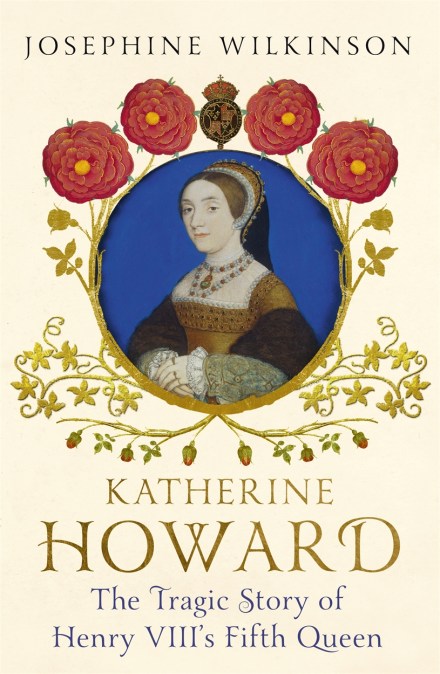Katherine Howard
On sale
20th April 2017
Price: £9.99
‘An impressive revisionist biography’ The Times
Looming out of the encroaching darkness of the February evening was London Bridge, still ornamented with the severed heads of Thomas Culpeper and Francis Dereham; the terrible price they had paid for suspected intimacy with the queen.
Katherine now reached the Tower of London, her final destination.
Katherine Howard was the fifth wife of Henry VIII and cousin to the executed Anne Boleyn. She first came to court as a young girl of fourteen, but even prior to that her fate had been sealed and she was doomed to die. She was beheaded in 1542 for crimes of adultery and treason, in one of the most sensational scandals of the Tudor age.
The traditional story of Henry VIII’s fifth queen dwells on her sexual exploits before she married the king, and her execution is seen as her just dessert for having led an abominable life. However, the true story of Katherine Howard could not be more different.
Far from being a dark tale of court factionalism and conspiracy, Katherine’s story is one of child abuse, family ambition, religious conflict and political and sexual intrigue. It is also a tragic love story. A bright, kind and intelligent young woman, Katherine was fond of clothes and dancing, yet she also had a strong sense of duty and tried to be a good wife to Henry. She handled herself with grace and queenly dignity to the end, even as the barge carrying her on her final journey drew up at the Tower of London, where she was to be executed for high treason.
Little more than a child in a man’s world, she was the tragic victim of those who held positions of authority over her, and from whose influence she was never able to escape.
Looming out of the encroaching darkness of the February evening was London Bridge, still ornamented with the severed heads of Thomas Culpeper and Francis Dereham; the terrible price they had paid for suspected intimacy with the queen.
Katherine now reached the Tower of London, her final destination.
Katherine Howard was the fifth wife of Henry VIII and cousin to the executed Anne Boleyn. She first came to court as a young girl of fourteen, but even prior to that her fate had been sealed and she was doomed to die. She was beheaded in 1542 for crimes of adultery and treason, in one of the most sensational scandals of the Tudor age.
The traditional story of Henry VIII’s fifth queen dwells on her sexual exploits before she married the king, and her execution is seen as her just dessert for having led an abominable life. However, the true story of Katherine Howard could not be more different.
Far from being a dark tale of court factionalism and conspiracy, Katherine’s story is one of child abuse, family ambition, religious conflict and political and sexual intrigue. It is also a tragic love story. A bright, kind and intelligent young woman, Katherine was fond of clothes and dancing, yet she also had a strong sense of duty and tried to be a good wife to Henry. She handled herself with grace and queenly dignity to the end, even as the barge carrying her on her final journey drew up at the Tower of London, where she was to be executed for high treason.
Little more than a child in a man’s world, she was the tragic victim of those who held positions of authority over her, and from whose influence she was never able to escape.
Newsletter Signup
By clicking ‘Sign Up,’ I acknowledge that I have read and agree to Hachette Book Group’s Privacy Policy and Terms of Use
Reviews
A riveting portrait
An impressive revisionist biography
[A] meticulous biography
Required reading
Never before have I come across such an eye-opening book on her life . . . For readers who love a true story, and a look at the time it was set in, this is the best I've ever read. A book to keep and revisit
[Josephine Wilkinson] makes extensive use of primary sources such as states papers, and fascinating research about sexuality and gender-appropriate behaviour in Tudor times, to give us a moving portrait of a tragic victim of unscrupulous men in positions of authority over her
This book deserves commendation because of the painful truths it reveals . . . Good history challenges us to think as much about the present as the past

